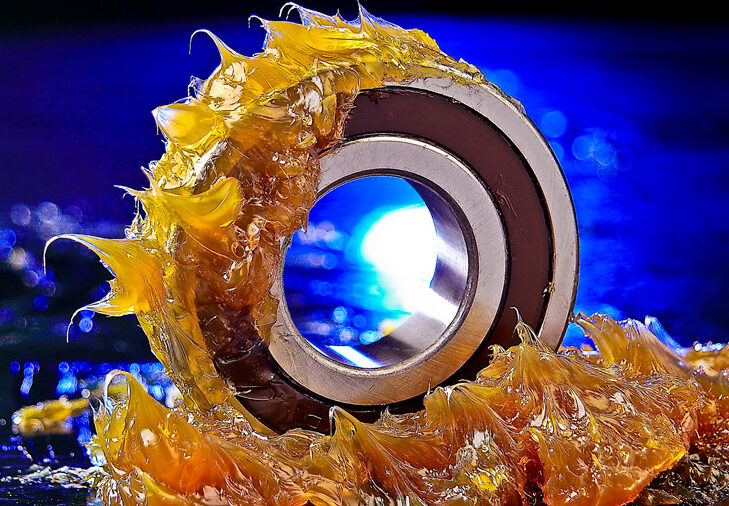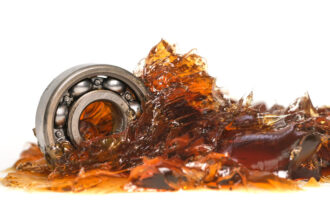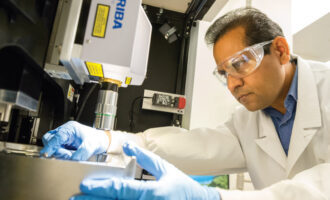
A resilient grease market
The latest NLGI Grease Production Survey was presented by Chuck Cole, president of Grease Technology Solutions LLC, during the recently completed NLGI Technical Week. The event, held virtually from 24-28 August 2020 due to current Covid-19 restrictions, provided a week of technical education to NLGI members and participants. The National Lubricating Grease Institute’s Grease Production Survey is generally recognised as the most comprehensive assessment of the global lubricating grease business and provides valuable data on grease production volumes, thickener types and base oils.
The 2019 report provides production volumes for the calendar year ending 31 December 2019. Though, the main benefit of the survey is arguably the trend information accumulated over time, from 2016 to 2019.
Headline figures paint the picture of a resilient grease market. Worldwide production of 2.66 billion pounds (b/lbs) reflects a modest 4.7 million pounds (m/lb) increase in 2019. The NLGI report presents the results of voluntary data collected from 234 companies representing 269 grease plants. The survey can be affected by changes in participation by individual companies. 12 companies in the 2019 report did not participate in 2018. Equally, 11 companies (representing 17 plants) that have previously provided production data did not participate in the most recent survey. NLGI estimates total global grease production, including non-participants, at 2.76 b/lb.
Conventional lithium and lithium complex thickeners accounted for 49.95% and 20.20% of volumes, respectively. We continue to witness a slow decline in the share of lithium thickeners with reported production falling to 1.867 b/lb, a decline of 54 m/lb year-on-year. NLGI’s analysis also provides comparative data on companies that have reported data from 2016 to 2019 – and therefore is unaffected by participant drop out. Comparative data demonstrates a 1.7% decline in lithium thickener production.
Global calcium grease production grew to 383 m/lb in 2019, a 58 m/lb increase. Reported aluminium thickener volumes dropped from 113 m/lb in 2018 to 93 m/lb in 2019, although comparative data demonstrated a far less significant contraction. Total volumes of polyurea grease increased slightly year-on-year to 164 m/lb (+2 m/lb). Again, this figure should be treated with caution as comparative data illustrated a fall in production of 7 m/lb.
The 2019 grease survey included production data by base fluid type. Despite a decline in overall volume, mineral oils contribute the lion’s share of base fluids for grease production (86.6%) followed by synthetic (7.42%), semi-synthetic (5.12%) and emerging bio-based fluids (0.87%). NLGI emphasises a continuing trend towards synthetic, semi-synthetic and bio-based base fluids. In 2019, synthetics increased by 40 m/lb, to 163 m/lb; semi-synthetic fluids increased to 113 m/lb, and bio-based fluids grew by 6 m/lb to reach 19 m/lb.
Notable regional differences were observed. North American grease production fell 9% to 458 m/lb, although the authors attribute 3% of the decline to participant drop out. Europe also suffered a large reduction in reported production, to 488 m/lb from 521 m/lb a year earlier, with 4.5% attributed to participant drop out.

Lithium greases are the big loser in North America with production declining from 323 m/lb in 2018 to 300 m/lb, including reductions in both conventional and complex variants. Calcium thickeners sank 3 m/lb in total data, although a slight increase in calcium soaps was observed in comparative data. Reported volumes of aluminium thickeners fell 17 m/lb in 2019, to 35 m/lb. Yet, comparative data from regularly reporting companies only demonstrated a slight fall of approximately 500,000 lbs.
In North America, conventional base fluids declined from 276 m/lb to 242 m/lb year-on-year. Synthetic base fluids increased by almost 5 m/lb, alongside a small increase in semi-synthetic and bio-based fluids. Europe witnessed a similar decline in conventional base fluid usage ﹣from 364 m/lb to 350 m/lb. However, comparative data in the European bloc revealed a different trend, an increase from 337 m/lb to 344 m/lb. Synthetic, semi-synthetic and bio-based fluids all experienced strong growth in both total and comparative data.
Lithium thickener volumes shrunk in Europe with total volumes falling to 338 m/lb from 365 m/lb a year earlier. Declines in comparative data were much smaller. Calcium soap production increased ever-so-slightly to 73 m/lb, while aluminium soap production fell 4 m/lb in the same period. Polyurea volumes in Europe also declined (-5 m/lb) in both comparative and total data.
China observed a large increase in grease production last year, from 844 m/lb to 955 m/lb (+13.2%), including substantial growth across all thickener types. Despite reductions in many other major markets, lithium production increased from 623 m/lb to 645 m/lb year-on-year. It is worth noting that China’s reported lithium grease volumes were 706 m/lb in 2017. The NLGI survey does not include comparative data outside of Europe and North America, as there are insufficient participants in these regions to maintain individual company confidentiality.
Conventional base fluid volumes in China jumped to 823 m/lb in 2019, similar to levels from two years ago, after a large decline in 2018. Synthetic fluids volumes were 62 m/lb, almost double the levels of 2018, whereas semi-synthetic fluids grew 6 million to 70 m/lb. A large increase in bio-based fluids was also reported, albeit on much smaller volumes. Bio-based fluid grease production in China was 639,357 lbs.
India registered a major decrease in grease production of more than 11% in 2019. NLGI attributes most of this decline to participant drop out in the survey. Indian reported grease production of 220 m/lb, with lithium soaps the major contributor (182 m/lb). Calcium soaps accounted for 12 m/lb. Conventional oils made up 97% of the base fluid reported in India.
Japan’s grease production was 173 m/lb, down from 185 m/lb a year earlier. In the Pacific and Southeast Asia, grease volumes expanded from 158 m/lb to 169 m/lb, whereas grease volumes in the Caribbean, Central & South America and Africa & Middle East changed very little from 2018.
echo '






